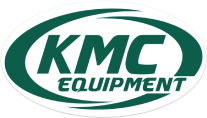Tips to Select the Right Telehandler
 A telehandler is similar to a forklift in that it’s used mostly for lifting and moving but there are some differences between the two. For example, telehandlers have a boom lift that can be moved in different ways, unlike a forklift. A telehandler is more suitable for outdoor chores, while forklifts are better for indoor work. We have provided some tips to help you buy the right telehandler. Read on to learn more!
A telehandler is similar to a forklift in that it’s used mostly for lifting and moving but there are some differences between the two. For example, telehandlers have a boom lift that can be moved in different ways, unlike a forklift. A telehandler is more suitable for outdoor chores, while forklifts are better for indoor work. We have provided some tips to help you buy the right telehandler. Read on to learn more!
Fixed vs. Rotating
Telehandlers have two basic movement types: fixed and rotating. Fixed models are better for heavier loads but they’re limited in their scope of movement. A rotating movement telehandler will let the cab and boom move in a 360-degree circle while keeping the main body stationary. This requires less movement of the telehandler, which is great for tight or challenging worksites. Knowing your requirements will help you decide which is better for you.
High- or Low-Profile Boom
The boom pivot pin on your telehandler is another thing you have to consider before selecting a model. A lot depends on the operator's comfort level with the type of boom. Low-mount booms are better for ground engagement and loader work while high-mount booms are better for lifting tasks. A high pin boom is positioned above the operator so the operator has to look under it whereas they’ll have to look over a low pivot pin boom.
Weight Capacity
Another important factor when looking at telehandlers is to figure out how much weight you’ll be lifting and moving. Ideally, you want a model that has greater lifting capacity than you need. This is to avoid a disaster just in case the machine is overloaded. Usually, the capacity of telehandlers ranges from around 4000 to 12000 pounds, but do keep in mind that when the boom is extended at maximum capacity, the weight limit will become lower.
Visit KMC Forklift in Bryan, TX, to browse our selection of telehandlers for sale. We welcome all those in Caldwell, College Station, and Hearne. Our team looks forward to serving you!

